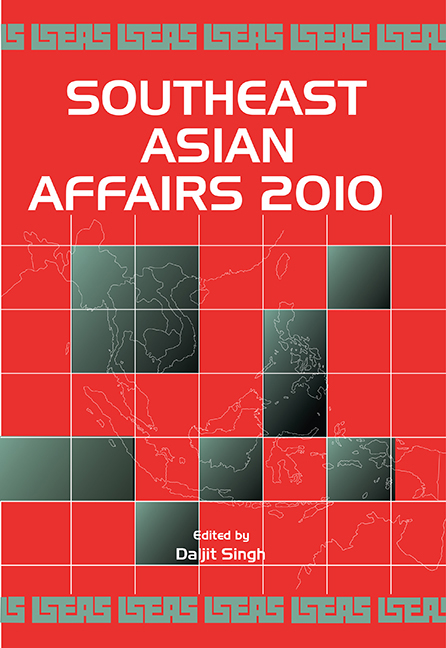Introduction
Published online by Cambridge University Press: 21 October 2015
Summary
With a gross domestic product (GDP) about the size of India's and growing in recent years at over 6 per cent a year, relatively open economies, a population approaching 600 million, location on the strategic sea routes between the Pacific and Indian Ocean, and the leverage in international relations provided by the Association of Southeast Asian Nations (ASEAN), the vibrant and very diverse region of Southeast Asia seems destined to play an increasingly important role in Asian affairs.
However, in viewing the condition of Southeast Asia in any particular year one is faced with both the positive and negative, a situation akin to a glass being half full or half empty, depending on the perspective of the viewer. Official elites, especially in Southeast Asia, often tend to highlight the full, while less sympathetic critics tend to emphasize the empty parts. The year 2009 continued to present this mixed picture, with both encouraging and troubling trends and developments. Economic indicators have been encouraging, and the economies will also benefit from the rise of China and India. However, GDP, even GDP per capita, while undeniably vital, are not deities exclusively determining the progress of countries and societies. Even as significant poverty remains in the region, serious shortcomings in governance abound in many countries.
In this Introduction it is of course impossible to draw out all the rich insights about the region and its component countries presented by the contributors to this volume. I can only, very selectively, highlight some trends and developments, focusing first on regional issues and then some individual countries.
Resilience in Coping with the Economic Crisis
Although Southeast Asia was significantly affected by the global economic crisis, thereby disproving the decoupling theorists, the adverse effects were not as dire as many had feared. Indeed, as Manu Bhaskaran shows in his economic review of Southeast Asia in this volume, regional economies manifested a surprising resilience in the face of the crisis. Bhaskaran attributes this to stronger financial sectors than during the time of the 1997–98 Asian crisis, better policy responses and macro-economic management, and, generally, the existence of more and better shock absorbers and fewer shock amplifiers. At the end of 2009 regional economies seemed poised for a good rebound, though the challenges of building longer-term resilience to cope with the uncertainties of a changing post-crisis global economy would continue to test state authorities.
- Type
- Chapter
- Information
- Southeast Asian Affairs 2010 , pp. ix - xxPublisher: ISEAS–Yusof Ishak InstitutePrint publication year: 2010



